
This is a breakout lesson created for a 6th grade unit on Ancient Greece.
- Subject:
- Ancient History
- Material Type:
- Activity/Lab
- Assessment
- Game
- Unit of Study
- Author:
- Jennifer Neset
- Date Added:
- 04/28/2021

This is a breakout lesson created for a 6th grade unit on Ancient Greece.

This resource is useful for students who can visit rare books in special collections libraries. Teachers and students of book history, literature, and art history might find this resource useful.
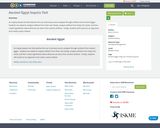
An inquiry-based unit that teaches the use of primary source analysis through artifacts from Ancient Egypt. Students are asked to analyze artifacts from their own family, analyze artifacts from King Tut’s tomb, and then create hypotheses about what we can learn from ancient artifacts. Finally, students will construct an argument and create a press release.
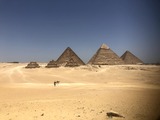
Three separate lessons covering the farming, trading, and geography of Ancient Egypt. Perferct for the beginning of studying Egypt in 6th grade. Each lesson includes pictures, articles, vocabulary to front load, and a quiz. The quizzes have both multiple choic and open ended questions.
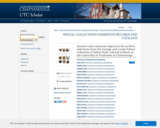
Early in the Spring 2020 semester, University of Tennessee at Chattanooga students in my Ancient to Modern Latin American Visual Culture Art History course embarked upon an intensive first-hand visual analysis and research project that involved working directly with original artifacts from Ancient Latin America housed within the University of Tennessee at Chattanooga Library’s Special Collections. This unique opportunity and the publication of their findings were made possible thanks to the generous support and assistance of Special Collections Director Carolyn Runyon and her dedicated staff.
By examining the wide array of Pre-Columbian objects in the George and Louise Patten Salem Hyde Papers and Cultural Artifacts Collection, these upper division students formed small research groups dedicated to specific artifact types, such as human figurines, animal figurines, tools and lithics, vessels, anthropomorphic ceramics, replicas, and sherds. They carefully recorded their original observations of their selected objects of study in written field notes, photographs, and drawings. Later, they compared their initial observations with preliminary collection data developed independently by Archaeology students of Dr. Andrew Workinger, leading to further questions and insights surrounding these extraordinary pieces predominantly from pre-contact indigenous cultures of the Central and Intermediate regions of Latin America that today comprise Costa Rica, Ecuador, Panama and Colombia. Building upon their analysis, the Art History student research groups then re-examined their selected artifacts through analytical frameworks focused on Gender and the Body, Color, Pattern and Materiality, Spirituality and the Object, Form and Function, and Identity and Representation. In presenting their findings to their peers, students received feedback that allowed them to refine their analysis and develop the original individual and group catalog essays that comprise this exhibition publication. Their research sheds further light on the extraordinary value and diversity of the ancient artifacts of Latin America that uniquely form part of UTC’s Special Collections, as well as the innovative power of interdisciplinary research and collaboration.
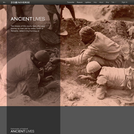
For classics scholars, the vast number of damaged and fragmentary texts from the waste dumps of Greco-Roman Egypt has resulted in a difficult and time-consuming endeavor, with each manuscript requiring a character-by-character transcription. Words are gradually identified based on the transcribed characters and the manuscripts' linguistic characteristics. Both the discovery of new literary texts and the identification of known ones are then based on this analysis in relation to the established canon of extant Greek literature and its lexicons. Documentary texts, letters, receipts, and private accounts, are similarly assessed and identified through key terms and names. Furthermore, an immense number of detached fragments still linger, waiting to be joined with others to form a once intact text of ancient thought, both known and unknown. The data not only continues to reevaluate and assess the literature and knowledge of ancient Greece, but also illuminates the lives and culture of the multi-ethnic society of Greco-Roman Egypt.
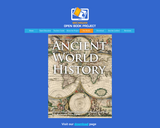
Seventh grade students will review the tools and mental constructs used by historians and geographers. They will develop an understanding of Ancient World History, Eras 1 – 4. Geography, civics/government, and economics content is integrated throughout the year. As a capstone, the students will conduct investigations about past and present global issues. Using significant content knowledge, research, and inquiry, they will analyze the issue and propose a plan for the future. As part of the inquiry, they compose civic, persuasive essays using reasoned arguments.
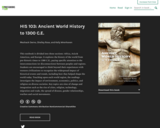
This textbook is divided into three sections: Africa, Asia & Americas, and Europe. It explores the history of the world from pre-historic times to 1300 C.E., paying specific attention to the interconnections (or disconnections) between peoples and regions. Students are encouraged to think beyond their experiences with western civilizations to recognize the widespread impact of historical events and trends, including how they helped shape the world today. Touching upon each world region, the readings investigate the impact of environment, economics, politics, and religion on diverse societies. Key topics are sites of change and integration such as the rise of cities, religion, technology, migration and trade, the spread of disease, gender relationships, warfare and social movements.
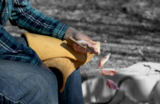
Explore the physics and material science of making stone tools. Educator Nate Salzman walks us through the surprisingly complex science of flintknapping, or the process of turning stone into blades, arrowheads, spear points, axes, jewelry and more. Making tools from stone may be thousands of years old, but required people to think about the properties of the material they were using and the physics of striking the stone to shape it just right.NOTE: These are animations derived from the video "The Science of Knapping" which is linked here and published under its own listing on OER Commons.This resource is part of Jefferson Patterson Park and Museum’s open educational resources project to provide history, ecology, archaeology, and conservation resources related to our 560 acre public park. More of our content can be found on YouTube and SketchFab. JPPM is a part of the Maryland Historical Trust under the Maryland Department of Planning.
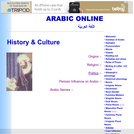
This webpage provides elementary information on aspects of Arab culture and history, including religion, politics, naming conventions, and Persian influence on Arab culture and language. The information seems to have been authored by the site's administrator, and contains no references or citations.

Nearly Everything You Need To Know About the Aztecs Can Be Found Within the Sacred Precinct.
This engaging video examines the most important part of the entire Aztec world: the literal center of the Universe: The Sacred Precinct of Mexico-Tenochtitlan. Now, nearly everything you need to know about the Aztecs can be found within this sacred space located in the center of its majestic city: Tenochtitlan. There’s about 78 structures, although all of them haven’t been found yet…. But these buildings can you teach you nearly everything… about the Culhua Mexica. You can learn about Aztec religion…. Social structure… architecture… engineering… sports… their cleanliness.
Model of Sacred Precinct is located at the Mexican National Museum of Anthropology and History.

This is the story of the Aztec’s historic 200+ year pilgrimage, as told from the 16th Century Primary source: The Codex Boturini.
The Aztecs came from a place in the north called: Aztlan, which means, “place of the White Heron.”
The Aztecs left their homeland Aztlan in about 1111 C.E. After more than 200 years of trials and tribulations, they stopped when they saw their sign from their god Huitzilopochtli: the eagle perched on the cactus. There, they would build one of the greatest cities in world history.
This is the story of their historic migration from Aztlan to Tenochtitlan in their own words.

This is a crossword that will help students of grade 7 to remember some essential details for the battle of Thermopylae, a very important lesson regarding ancient Greek history.

The Children’s Hour has produced a six part podcast and curriculum series on the history of the American Southwest, in partnership with the Center for New Mexico Archaeology, the Native American Community Academy (NACA), NACA Inspired Schools Network, and numerous others.Typically a region of the US that is overlooked in textbooks, the Southwestern United States history begins 23,000 years ago in what is now know as White Sands National Park. Students will learn how the area was settled, from its Indigenous beginnings through the brutal era of Colonization by Spain, and then the United States, and finally emerging into statehood. This series highlights the moments that changed the history of this region and this nation forever.The series comes with a free, download-able Learn-Along Guide that meets and cites US national education standards for elementary through high school students. Our production began with “virtual field trips” for students that include expert interviews to better understand each time period. Students can hear the full conversations with our experts by watching the field trips at The Children's Hour YouTube page.Join us, and learn about our fragile, and deeply rooted story of our high desert region over six episodes, and through our Learn-Along guide.
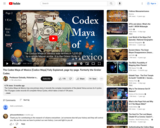
The Codice Maya de Mexico has one primary story, it records the complex movements of the planet Venus across its 4 cycles. The 10-pages codex records 65 complete Venus Cycles, which takes a total of 104 years.
The Codice Maya of Mexico was written in 1,110 CE by a single Mayan scribe. It is the oldest book in all the Americas. This video will translate this 900 year old Maya Codex, page-by-page.
The book was found in the 1960s by looters, and it's taken more than 50 years to analyze and authenticate this book. But this Mexican book is 100% real.
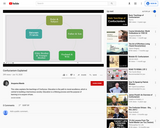
This video explains the teachings of Confucius. Education is the path to moral excellence, which is central to building a harmonious society. Education is a lifelong process and the purpose of learning is to acquire virtues.
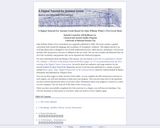
John William White's First Greek Book was originally published in 1896. The book contains a guided curriculum built around the language and vocabulary of Xenophon’s Anabasis. This digital tutorial is an evolving edition that is designed to run on both traditional browsers, tablet devices, and phones. Each lesson includes drill and practice exercises in addition to the text itself. The site also includes tab-delimited files for all of the vocabulary and grammar that can be imported into flashcard programs.
For more information about the design of the tutorial, you can read an article that was published in Volume 107, Number 1, Fall 2013 of the journal Classical World on pages 111-117 or a presentation from the 2013 meeting of the Digital Classics Association. An article about the audiences and usage statistics for the tutorial entitled An Open Tutorial for Beginning Ancient Greek has been published in a volume of papers entitled Word, Space, Time: Digital Perspectives on the Classical World. edited by Gabriel Bodard & Matteo Romanello and published by Ubiquity Press.
You can use these pages to study Ancient Greek online. As you complete the drill and practice exercises in each chapter, you will earn drachmas to help track your progress. The exercises keep track of the questions you have missed and presents those to you more often. Information about your progress is stored in a cookie on your computer. You can clear all of this data on the settings page.
When you have successfully completed all of the exercises in a chapter, you will have ten drachmas. You will lose drachmas as time passes so you know when you need to review chapters again.
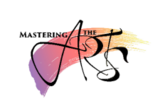
This resource was created by Michael Fehringer, in collaboration with Lynn Bowder, as part of ESU2's Mastering the Arts project. This project is a four year initiative focused on integrating arts into the core curriculum through teacher education and experiential learning.

Mini-Unit Rationale:In this unit, the content to be covered will all fall under the subheading of early Muslim Civilizations. Previously the students have studied early river valley civilizations such as in the Fertile Crescent, the Indus River Valley, the Americas, the Huang River Valley and the Nile River Valley. The students will be able to use their previous knowledge of the basic constructs of a civilization to build upon the content in this chapter (10) that outlines the creation, spread and division of the Muslim political and religious empires of the Middle East. This mini-unit will lead students to the next mini-unit, which covered the spread of Islam into South and Southeast Asia through religious, cultural and political diffusion among other varying factors.This mini-unit will consist of five 45-minute lessons to be taught to a college-prep level freshman World Studies course in a private, co-educational Catholic high school classroom. There are sixteen students in the class, of varying academic abilities. Some students in the general education class have 504 accommodation plans and two have IEP’s, but they are grouped heterogeneously into this social studies course with all college-prep level students. The school is a 1 to 1 school, and all students have iPads with Ebook textbooks, internet capability, QR code readers and the whole slate of Google Apps downloaded onto their tablets. The students will all have multiple new applications downloaded onto their iPads prior to this mini-unit, and will learn how to use them during tutorial portions within this mini-unit.Overall Goal:This mini-unit is designed to help students develop as historical thinkers, critical thinkers, and digital citizens through the lens of analyzing the origins, division and spread of early Muslim civilizations.Overall Objectives:1. Students will be able to... identify the prophet of Islam, Muhammad, and explain how his teachings spread the Islamic beliefs throughout the Middle East and eventually, the world.2. Students will be able to... explain how Islam affected all aspects of religious and secular society for Muslims, and how this led to advancements and innovation in many parts of the world.3. Students will be able to... explain the divisions that emerged within Islam and the differences between their major beliefs.4. Students will be able to... explain the rise of the Umayyad and Abbasid caliphates and how those empires affected the Middle East and the surrounding lands.5. Students will be able to… read and understand detailed maps and virtual reality images of the important historical sites of Mecca and Medina, and explain their significance to the rise and spread of Islam.Overall Standards:NCSS Standards Strands:Time, Continuity and Change: Evaluate the impact of the institutions, values, and beliefs of people in the past on important historical decisions and developments, and compare different interpretations of the causes and consequences of these decisions and developments.Individuals, Groups and Institutions: Evaluate different interpretations of the influence of groups and institutions on people and events in historical and contemporary settings.Individuals, Groups and Institutions: Analyze examples of tensions between belief systems and governmental actions and policies.Power, Authority and Governance: Examine persistent issues involving the rights, responsibilities, roles, and status of individuals and groups in relation to the general welfare.Global Connections: Describe and explain conditions and motivations that contribute to conflict, cooperation, and interdependence among groups, societies, and nations.CSDE Common Core Social Studies Standards:GEO 6–7.2 Use maps, satellite images, photographs, and other representations to explain relationships between the locations of places and regions, and changes in their environmental characteristics.GEO 6–7.3 Explain how cultural patterns and economic decisions influence environments and the daily lives of people.GEO 6–7.4 Analyze the cultural and environmental characteristics that make places both similar to and different from one another.GEO 6–7.5 Explain the connections between the physical and human characteristics of a region and the identity of individuals and cultures living there.CIV 6–7.1 Explain specific roles played by citizens (such as voters, jurors, taxpayers, members of the armed forces, petitioners, protesters, and officeholders).CIV 6–7.3 Compare historical and contemporary means of changing societies and promoting the common good.HIST 6–8.1 Use questions about historically significant people or events to explain the impact on a region.INQ 9–12.5: Determine the kinds of sources that will be helpful in answering compelling and supporting questions, taking into consideration multiple points of view represented in the sources, the types of sources available, and the potential uses of the sources.Connecticut Common Core Literacy Standards:CCSS.ELA-LITERACY.W.11-12.4: Produce clear and coherent writing in which the development, organization, and style are appropriate to task, purpose, and audience.CCSS.ELA-LITERACY.W.11-12.8: Gather relevant information from multiple authoritative print and digital sources, using advanced searches effectively; assess the strengths and limitations of each source in terms of the task, purpose, and audience; integrate information into the text selectively to maintain the flow of ideas, avoiding plagiarism and overreliance on any one source and following a standard format for citation.CCSS.ELA Literacy and Reading RH.11-12.2: Determine the central ideas or information of a primary or secondary source; provide an accurate summary that makes clear the relationships among the key details and ideas.Diocese of Bridgeport Standards:Historical Thinking: Students will develop historical thinking skills, including chronological thinking and recognizing change over time; contextualizing, comprehending and analyzing historical literature; researching historical sources; understanding competing narratives and interpretation; and constructing narratives and interpretation.Diocese of Bridgeport Historical Thinking Skills:Skill 1: Trace the emergence and decline of Muslim civilizations.Skill 2: Explain how geography and history are linked.Skill 3: Describe the tenets of Islam.Skill 4: Analyze the reason for the division of Islam.Skill 5: Evaluate the role of religion in the development of the Muslim empires in the Middle East.Skill 6: Describe the major characteristics of Muslim empires.Skill 7: Describe examples of cultural diffusion from the Muslim Empires.Skill 8: Describe the characteristics and advances of the Golden Age of Islam.Local, United States and World History: Students will use historical thinking skills to develop an understanding of the major historical periods, issues and trends in United States history, world history, and Connecticut and local history.Historical Themes: Students will apply their understanding of historical periods, issues and trends to examine such historical themes as ideals, beliefs and instructions; conflict and conflict resolution; human movement and interaction; and science and technology in order to understand how the world came to be the way it is.Applying History: Students will recognize the continuing importance of historical thinking and historical knowledge in their own lives and in the world in which they live.ISTE Net Standards for Students:Empowered Learner: 1C: Students use technology to seek feedback that informs and improves their practice and to demonstrate their learning in a variety of ways.1D: Students understand the fundamental concepts of technology operations, demonstrate the ability to choose, use and troubleshoot current technologies and are able to transfer their knowledge to explore emerging technologies.Digital Citizen: 2B: Students engage in positive, safe, legal and ethical behavior when using technology, including social interactions online or when using networked devices.2C: Students demonstrate an understanding of and respect for the rights and obligations of using and sharing intellectual property.Knowledge Constructor: 3A: Students plan and employ effective research strategies to locate information and other resources for their intellectual or creative pursuits.3C: Students curate information from digital resources using a variety of tools and methods to create collections of artifacts that demonstrate meaningful connections or conclusions.Innovative Designer: 4A: Students know and use a deliberate design process for generating ideas, testing theories, creating innovative artifacts or solving authentic problems.Creative Communicator: 6B: Students create original works or responsibly repurpose or remix digital resources into new creations.6C: Students communicate complex ideas clearly and effectively by creating or using a variety of digital objects such as visualizations, models or simulations.6D: Students publish or present content that customizes the message and medium for their intended audiences.Global Collaborator: 7B: Students use collaborative technologies to work with others, including peers, experts or community members, to examine issues and problems from multiple viewpoints.7C: Students contribute constructively to project teams, assuming various roles and responsibilities to work effectively toward a common goal.7D: Students explore local and global issues and use collaborative technologies to work with others to investigate solutions.Overall Unit Assessments:Formative Assessments: Teacher will monitor student progress by circulating and assessing student on-task behavior while providing immediate feedback and redirection if necessary.Teacher will check daily student progress via student-group Google Doc sheets.Students will take various Google Forms formative assessments to gauge their individual understanding of the content knowledge, as well as reflect on their collaboration and participation in lesson activities.Answer Garden formative assessment will be posed to gauge their individual understanding of the content knowledge, as well as reflect on their collaboration and participation in lesson activities.Students will participate in interactive Kahoot Quizzes to help both teacher and student understand individual real-time comprehension levels.Summative Assessments:Students will create an original telecast in small groups of three to display their knowledge and understanding of the Umayyad and Abbasid Empires and/or the Golden Age of Muslim Civilization, and this mini-unit overall.Students will take a summative assessment at the end of Chapter 11 (after multiple mini-units are completed) in the form of a pen-to-paper Unit test.Summary of Mini-Unit:Students will begin this unit by learning about the context of the time period, and the geography of the land and cities from where the early Muslim civilizations emanated. Then, they will learn about the major tenets of Islam and a religion and Muslims as a culture and the political systems of the early empires. Next, students will analyze the origins and spread of conflict that lead to the division of Islam into the two major sects of the religion: Sunni and Shi’a. Finally, students will learn about the Umayyad and Abbasid empires and analyze their contributions to society and culture in the Middle East, as well as trace the emergence and decline of those Muslim empires.Technology Rationale:The 9th grade students will be using various technologies each day of this mini-unit, ranging from iPad applications, to QR codes, to engaging Smart-board technology. The integration of technology into this mini-unit will optimize students’ learning experience by encouraging student collaboration, providing innovative ways of communicating their own ideas, and engaging students as global citizens who demonstrate an understanding of digital citizenship and proper use of technology in an academic setting. Some of the technologies used by the teacher and students are included to streamline the transition process and create a paperless classroom environment, which will provide many benefits for the class and even transcend the classroom, such as environmental and economical.
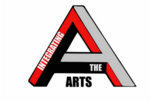
This resource was created by Whittney Carnahan, in collaboration with Dawn DeTurk, Hannah Blomstedt, and Julie Albrecht, as part of ESU2's Integrating the Arts project. This project is a four year initiative focused on integrating arts into the core curriculum through teacher education, practice, and coaching.